15.6 Points, 9 Rebounds, 1.4 Assists, 1.2 Steals, 0.8 Blocks, 49% FG, 32% 3P, 65% FT
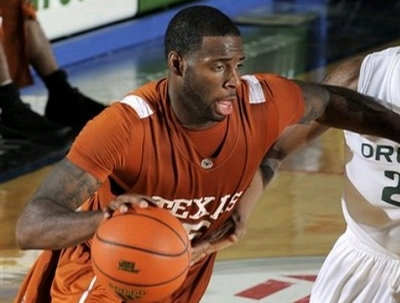
Matt Williams
With two years of valuable experience under his belt, Damion James came into this season looking to build upon a pair of very solid campaigns and assume a big share of the offensive responsibilities left behind by D.J. Augustin. While he has had some success in accomplishing that mission, not everything has gone smoothly for him this season. James has struggled in his attempt to prove that he is a true small forward, but his ability to make an impact working off the ball, toughness as a rebounder, and hustle will keep him in draft conversations.
Before we return to what makes James an interesting NBA prospect, lets first look at the area of his game that he's struggled to develop: his perimeter game. Last season, James emerged as a legitimate three-point threat knocking down 41.3% of his attempts from beyond the arc on the year. It seemed that 2009 would be an ideal opportunity for James to not only continue knocking down shots from the perimeter, but also show improved ball-handling and shot-creating ability improvements that would allow him to move to the small forward position full time. However, this hasn't been the case. Rather, it emphasizes how big of a factor Augustin was in James' effectiveness from the perimeter.
This season, James has only hit 32% of his shots from deep, and while his form pretty remains solid, he's had a very hard time compensating for the fact that he no longer has a point guard that can routinely get him the ball with time and space. Without Augustin, James has gotten significantly less spot-up opportunities, and has had a harder time driving to the rim showing very little improvement in his ability to put the ball on the floor with his left hand or change directions when attacking a defender that isn't recovering from a rotation. While James has had a hard time hitting his shots from the outside and is yet to show the shot creating ability that would project him as a full-time small forward at the next level, he's still upped his TS% (54%), scoring rates, and PER this season.
The trait that has allowed James to stay effective with and without Durant and Augustin has been his ability to create easy scoring opportunities by being in the right place at the right time. According to Synergy Sports Technology's Quantified Player Report, James gets 12% of his offense from shots off of cuts, 11% from offensive rebounds, and 16% in transition. James does a great job moving to open areas on the floor, showing great timing when flashing to the rim and crashing the boards. On top of that, he consistently runs the floor hard in transition and provides a presence around the rim.
The physical aggressiveness that James displays often overshadows his lack of size, and allows him to be very productive around the basket. He proves to be an excellent finisher, and is the type of player that seems to like seeking out contact. While that assertiveness serves him well at times, it also earns him quite a few trips to the line, where he shoots an improving percentage, up from 57% to 65% this year.
The motor he shows on the offensive end helps him be equally effective as a rebounder. James shows tremendous fundamentals when cleaning the glass. He is always moving towards the rim before shots go up on the offensive end, gets low to use leverage when boxing out defensively, and looks to pull down the ball at its highest point. This season, James has been even more impressive than in years past ,despite a slight decline in his numbers. He still ranks in the top-25 in our database in rebounds per 40-minutes pace adjusted even though Rick Barnes has had him spending a bit more time on the wing in an effort to foster his perimeter skills.
On the defensive end, James hasn't progressed much in terms of fundamentals, but manages to be somewhat effective due to his scrappiness and tenacity. He still has all the tools to be very solid, and comes up with some pass deflections due to his length and anticipation. Despite showing good lateral quickness when closing out shooters, James shows questionable footwork, often getting turned around when the ball is swung and not getting low to prevent penetration. James has shown some strides as a post defender, doing a better job going straight up than he has in the past, but will need to be taught better fundamentals so that he can defend the perimeter on the next level.
In projecting James to the next level, his lack of progress on the perimeter and size may hurt his stock, but he seems like a clear candidate to be selected by a playoff team as a role-playing forward. A player with a similar physical profile, Luc Richard Mbah a Moute, has found his way into Milwaukee's rotation this season, and James certainly could be capable of offering the same type of value in a similar situation. Whether James declares for the draft this season remains to be seen, but he's a guy that a lot of teams are going to like given his effort on the floor and ability to be productive without the ball in his hands.
Before we return to what makes James an interesting NBA prospect, lets first look at the area of his game that he's struggled to develop: his perimeter game. Last season, James emerged as a legitimate three-point threat knocking down 41.3% of his attempts from beyond the arc on the year. It seemed that 2009 would be an ideal opportunity for James to not only continue knocking down shots from the perimeter, but also show improved ball-handling and shot-creating ability improvements that would allow him to move to the small forward position full time. However, this hasn't been the case. Rather, it emphasizes how big of a factor Augustin was in James' effectiveness from the perimeter.
This season, James has only hit 32% of his shots from deep, and while his form pretty remains solid, he's had a very hard time compensating for the fact that he no longer has a point guard that can routinely get him the ball with time and space. Without Augustin, James has gotten significantly less spot-up opportunities, and has had a harder time driving to the rim showing very little improvement in his ability to put the ball on the floor with his left hand or change directions when attacking a defender that isn't recovering from a rotation. While James has had a hard time hitting his shots from the outside and is yet to show the shot creating ability that would project him as a full-time small forward at the next level, he's still upped his TS% (54%), scoring rates, and PER this season.
The trait that has allowed James to stay effective with and without Durant and Augustin has been his ability to create easy scoring opportunities by being in the right place at the right time. According to Synergy Sports Technology's Quantified Player Report, James gets 12% of his offense from shots off of cuts, 11% from offensive rebounds, and 16% in transition. James does a great job moving to open areas on the floor, showing great timing when flashing to the rim and crashing the boards. On top of that, he consistently runs the floor hard in transition and provides a presence around the rim.
The physical aggressiveness that James displays often overshadows his lack of size, and allows him to be very productive around the basket. He proves to be an excellent finisher, and is the type of player that seems to like seeking out contact. While that assertiveness serves him well at times, it also earns him quite a few trips to the line, where he shoots an improving percentage, up from 57% to 65% this year.
The motor he shows on the offensive end helps him be equally effective as a rebounder. James shows tremendous fundamentals when cleaning the glass. He is always moving towards the rim before shots go up on the offensive end, gets low to use leverage when boxing out defensively, and looks to pull down the ball at its highest point. This season, James has been even more impressive than in years past ,despite a slight decline in his numbers. He still ranks in the top-25 in our database in rebounds per 40-minutes pace adjusted even though Rick Barnes has had him spending a bit more time on the wing in an effort to foster his perimeter skills.
On the defensive end, James hasn't progressed much in terms of fundamentals, but manages to be somewhat effective due to his scrappiness and tenacity. He still has all the tools to be very solid, and comes up with some pass deflections due to his length and anticipation. Despite showing good lateral quickness when closing out shooters, James shows questionable footwork, often getting turned around when the ball is swung and not getting low to prevent penetration. James has shown some strides as a post defender, doing a better job going straight up than he has in the past, but will need to be taught better fundamentals so that he can defend the perimeter on the next level.
In projecting James to the next level, his lack of progress on the perimeter and size may hurt his stock, but he seems like a clear candidate to be selected by a playoff team as a role-playing forward. A player with a similar physical profile, Luc Richard Mbah a Moute, has found his way into Milwaukee's rotation this season, and James certainly could be capable of offering the same type of value in a similar situation. Whether James declares for the draft this season remains to be seen, but he's a guy that a lot of teams are going to like given his effort on the floor and ability to be productive without the ball in his hands.
Nick Calathes, 6-5, Sophomore, PG/SG, Florida
18.8 points, 6.5 assists, 5.4 rebounds, 2.1 steals, 3.3 turnovers, 51% FG, 42% 3FG, 70.9% FT
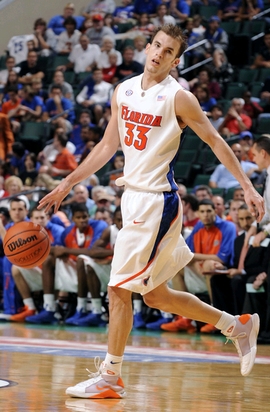
Scott Nadler
From the end of last season to the beginning of this one, Nick Calathes spent about three months without Florida Gator basketball. After spending six weeks from June to August playing for the U-20 Greek national team, Calathes returned back to Gainesville only to be sidelined for 5 weeks because of a hip flexor. In addition to that, up and coming point guard Jai Lucas transferred to Texas and Florida welcomed five new freshman to their squad. Thus, Calathes was asked to shoulder the majority of the point guard responsibilities and become the team's leader.
What makes Calathes so effective is in his ability to control the pace of a game. He can play an up-tempo style or run an offense in the half-court and in either fashion he seems to make good decisions. He makes great passes at the right times and to go along with his 6.5 assists a game he makes countless passes that lead to assists - contributing to the team's ball movement.
Calathes' passing ability is far and beyond his greatest skill. He sees the court unlike any other player in the country relative to his size and repeatedly makes difficult passes with either hand, creating easy shots for his teammates. At 6-5, he has great size and therefore can see over the defense - making passes that most point guards in college cannot. His great strength is also a weakness however, as he can get into trouble, attempting unreasonably difficult passes at times, which is why he's averaging 3.3 turnovers a game, which is 20th worst in the country.
Perhaps Calathes' biggest improvement from a year ago is in his shooting efficiency, where his numbers are up across the board. He's making 57% of his shots inside the arc (up from 46%) and 42.3% from 3-point range (up from 36.2%). The biggest reason for this is in his shot selection, as he's forcing the action less and recognizing when he's open and what the defense is giving him more. He's doing a much better job finishing around the basket this season, going from converting just 49% of his shots around the rim last season to a far more impressive 64% this year. This is a big development considering that he's deemed to be severely lacking both strength and athleticism by NBA standards, yet spends quite a bit of time in the paint at the collegiate level.
Calathes plays a huge role for Florida, handling the ball a great deal and having almost their entire offense revolve around him. He could definitely stand to improve his free throw shootingat just 71% - but he gets to the line at an extremely impressive rate of 7.1 times a game per 40 pace adjusted. While not overly quick or explosive by any means, Calathes uses his high basketball IQ to constantly find ways to get in the lane. He changes his speeds very well and uses deceptive moves to get his defenders off balance. At times, he tries to get a little too cute, though, by either splitting a double team or trying to beat a quicker opponent without a screen, which makes him somewhat turnover prone.
Defensively, there are plenty of question marks over whether he can guard his position at the next level, as lacks great lateral quickness and consistently struggles keeping quicker guards in front of him. He's also a bit of a gambler on this end of the court, often playing out of position trying to create big plays. The effort is always there however and his anticipation skills are stellar, making the gambling pay off at times to the tune of 2.1 steals a game, which is amongst the NCAA leaders. His ability to rebound from the guard spot is also very impressive, as he pulls down over 5 a game. Calathes posted a triple double earlier this season against Georgia and has been close to another one on a couple of occasions.
It will be interesting to see how decision makers evaluate Calathes as a pro prospect, as he is clearly a very unique player who does not fit a prototype. His ideal position is likely at the point guard spot, but he may struggle to create shots as effectively for himself as others as he does in college, and also will have a very hard time defending opposing point guards on the other end of the floor. There are very few players in college basketball who bring his combination of production and basketball IQ to the table, though, and considering that he's just a sophomore, he probably still has room to improve as well. In the right system alongside the right type of players Calathes could likely be very effective, but whether or can find that is not a given.
From what we've been told, there is a good chance that Calathes will decide to put his name in this year's draft.
What makes Calathes so effective is in his ability to control the pace of a game. He can play an up-tempo style or run an offense in the half-court and in either fashion he seems to make good decisions. He makes great passes at the right times and to go along with his 6.5 assists a game he makes countless passes that lead to assists - contributing to the team's ball movement.
Calathes' passing ability is far and beyond his greatest skill. He sees the court unlike any other player in the country relative to his size and repeatedly makes difficult passes with either hand, creating easy shots for his teammates. At 6-5, he has great size and therefore can see over the defense - making passes that most point guards in college cannot. His great strength is also a weakness however, as he can get into trouble, attempting unreasonably difficult passes at times, which is why he's averaging 3.3 turnovers a game, which is 20th worst in the country.
Perhaps Calathes' biggest improvement from a year ago is in his shooting efficiency, where his numbers are up across the board. He's making 57% of his shots inside the arc (up from 46%) and 42.3% from 3-point range (up from 36.2%). The biggest reason for this is in his shot selection, as he's forcing the action less and recognizing when he's open and what the defense is giving him more. He's doing a much better job finishing around the basket this season, going from converting just 49% of his shots around the rim last season to a far more impressive 64% this year. This is a big development considering that he's deemed to be severely lacking both strength and athleticism by NBA standards, yet spends quite a bit of time in the paint at the collegiate level.
Calathes plays a huge role for Florida, handling the ball a great deal and having almost their entire offense revolve around him. He could definitely stand to improve his free throw shootingat just 71% - but he gets to the line at an extremely impressive rate of 7.1 times a game per 40 pace adjusted. While not overly quick or explosive by any means, Calathes uses his high basketball IQ to constantly find ways to get in the lane. He changes his speeds very well and uses deceptive moves to get his defenders off balance. At times, he tries to get a little too cute, though, by either splitting a double team or trying to beat a quicker opponent without a screen, which makes him somewhat turnover prone.
Defensively, there are plenty of question marks over whether he can guard his position at the next level, as lacks great lateral quickness and consistently struggles keeping quicker guards in front of him. He's also a bit of a gambler on this end of the court, often playing out of position trying to create big plays. The effort is always there however and his anticipation skills are stellar, making the gambling pay off at times to the tune of 2.1 steals a game, which is amongst the NCAA leaders. His ability to rebound from the guard spot is also very impressive, as he pulls down over 5 a game. Calathes posted a triple double earlier this season against Georgia and has been close to another one on a couple of occasions.
It will be interesting to see how decision makers evaluate Calathes as a pro prospect, as he is clearly a very unique player who does not fit a prototype. His ideal position is likely at the point guard spot, but he may struggle to create shots as effectively for himself as others as he does in college, and also will have a very hard time defending opposing point guards on the other end of the floor. There are very few players in college basketball who bring his combination of production and basketball IQ to the table, though, and considering that he's just a sophomore, he probably still has room to improve as well. In the right system alongside the right type of players Calathes could likely be very effective, but whether or can find that is not a given.
From what we've been told, there is a good chance that Calathes will decide to put his name in this year's draft.
Sam Young, 6-6, Small Forward, Senior, Pittsburgh
18.1 points, 5.7 rebounds, 1.3 assists, 2.1 turnovers, 1.1 steals 50% FG, 36% 3P, 70% FT
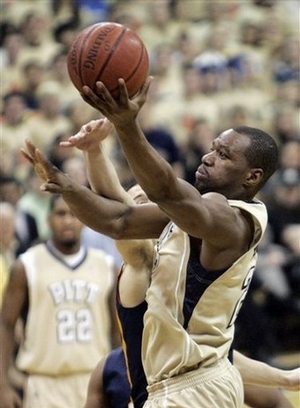
Joey Whelan
Projected as one of the top prospects in the Big East going into the year, Sam Young has continued to perform much as he did last season when he was an honorable mention All-American selection. The senior is the leading scorer for a team many pundits already have penciled in for the Final Four come March, and he has shown marginal improvements in some of the weaker points of his overall game.
Young is spending more time at the small forward position this season, and is looking more comfortable away from the basket as a result. He's shooting more 3-pointers this year, and is getting more opportunities to take his defender off the dribble going one on one. He continues to put the ball in the basket at a very high rate (just a hair under 50%) despite being more daring with his shot selection. His release continues to be quick, making him a threat to catch and shoot on the perimeter, but his form could use a bit of fine tuning. Certainly his increased production from beyond the arc will be intriguing to pro scouts envisioning Young as a 3 at the next level. His three-point field goal percentage may have dipped a couple of points from last season, but Young is attempting more than one full additional field goal from this range per game. He has also greatly improved his ability to catch and shoot coming off of screens.
The senior's ball-handling skills gave scouts the most pause about his game last season, and while he shows minor improvements, Young is still very much a straight line driver. In the half court set he is still able to get to the basket on a regular basis due to his over exaggerated pump fake and quick first step, but he misses out on some opportunities in transition. Often times he is forced to take a tougher angle to the basket as a result of his inability to effectively change direction with the basketball when in full stride. While he may be able to elevate over defenders with his athleticism to get his shot off now, it will be a much different case in the NBA. With that said though, there are few players in the country who can challenge Young when it comes to finishing in transition. He possesses unbelievable power and athleticism, a combination that makes for a long list of highlight reel finishes when Pitt is able to run in the open floor.
Defense continues to be a major staple of Young's game. He has solid lateral quickness, a good wingspan and most importantly, is always hustling. Even in situations where ball handlers may have a step on him going to the basket, he recovers so well that he still alters a good number of shots that he otherwise shouldn't be able to. He still could stand to improve how he deals with screens and the pick and roll, something that will be vital to his success as a player at the next level. His rebounding numbers have taken the slightest dip from last season, in large part due to his positional change, but he continues to be an excellent rebounder for his size and the position he plays.
Young is doing all the right things as far as his reaching the next level is concerned. He has further improved his ability to be an effective scorer away from the basket, both as a shooter and when putting the ball on the floor. Though he still has work to do in several aspects of his game, it is clear he is starting to take steps in the right direction to improve these facets. His frame, athleticism and hustle alone are enough to make him an appetizing prospect, but he has the developing skill set to back it up as well. While right now he looks like he could land anywhere from the late first round to mid-second round at this point, a deep run by Pitt in the NCAA Tournament could only help Young's stock come June.
Young is spending more time at the small forward position this season, and is looking more comfortable away from the basket as a result. He's shooting more 3-pointers this year, and is getting more opportunities to take his defender off the dribble going one on one. He continues to put the ball in the basket at a very high rate (just a hair under 50%) despite being more daring with his shot selection. His release continues to be quick, making him a threat to catch and shoot on the perimeter, but his form could use a bit of fine tuning. Certainly his increased production from beyond the arc will be intriguing to pro scouts envisioning Young as a 3 at the next level. His three-point field goal percentage may have dipped a couple of points from last season, but Young is attempting more than one full additional field goal from this range per game. He has also greatly improved his ability to catch and shoot coming off of screens.
The senior's ball-handling skills gave scouts the most pause about his game last season, and while he shows minor improvements, Young is still very much a straight line driver. In the half court set he is still able to get to the basket on a regular basis due to his over exaggerated pump fake and quick first step, but he misses out on some opportunities in transition. Often times he is forced to take a tougher angle to the basket as a result of his inability to effectively change direction with the basketball when in full stride. While he may be able to elevate over defenders with his athleticism to get his shot off now, it will be a much different case in the NBA. With that said though, there are few players in the country who can challenge Young when it comes to finishing in transition. He possesses unbelievable power and athleticism, a combination that makes for a long list of highlight reel finishes when Pitt is able to run in the open floor.
Defense continues to be a major staple of Young's game. He has solid lateral quickness, a good wingspan and most importantly, is always hustling. Even in situations where ball handlers may have a step on him going to the basket, he recovers so well that he still alters a good number of shots that he otherwise shouldn't be able to. He still could stand to improve how he deals with screens and the pick and roll, something that will be vital to his success as a player at the next level. His rebounding numbers have taken the slightest dip from last season, in large part due to his positional change, but he continues to be an excellent rebounder for his size and the position he plays.
Young is doing all the right things as far as his reaching the next level is concerned. He has further improved his ability to be an effective scorer away from the basket, both as a shooter and when putting the ball on the floor. Though he still has work to do in several aspects of his game, it is clear he is starting to take steps in the right direction to improve these facets. His frame, athleticism and hustle alone are enough to make him an appetizing prospect, but he has the developing skill set to back it up as well. While right now he looks like he could land anywhere from the late first round to mid-second round at this point, a deep run by Pitt in the NCAA Tournament could only help Young's stock come June.
Dominic James, 6'0, Point Guard, Senior, Marquette
11.7 points, 5.3 assists, 3.6 rebounds, 2.3 steals, 2.0 turnovers, 42% FG, 28% 3PT, 46% FT
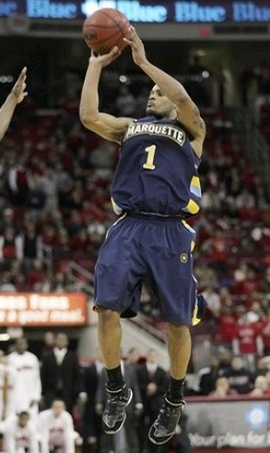
Joseph Treutlein
Finally reaching the end of his roller coaster ride of a college career, Dominic James is someone we've written about countless times over the past four years. James' outstanding freshman season led to many projecting him as a future lottery pick, but after four years of struggling to live up to expectations, James now sits on the border of being drafted at all.
At first glance, many red flags pop up in looking at James' progression over his four years in college, namely his consistent decline in point production, along with his relative stagnation in most other areas. However, looking closer, there are many reasons to be optimistic, and although many people have all but written him off, much intrigue still remains in this diminutive athlete.
For the most part, James' game hasn't changed drastically in his four years at Marquette. He's an incredibly explosive and quick point guard who takes advantage of his physical attributes both with his first step and at the rim. To say he'd be in the upper echelon of point guards in the NBA in terms of purely athletic abilities would not be a stretch.
On the other hand, James' perimeter shooting is still a major area of concern, and his overall efficiency scoring the ball is abysmal, as evidenced by his 48% TS%, second worst of all players projected to be drafted over the next two years. James' shooting woes have crossed over to the free-throw line this season as well, where he's shooting, for a point guard, a nearly unheard of 46%.
In analyzing James' shot, a few things stand out, most of which we've alluded to in past write-ups of James. The biggest problem with James' shot right now is his inconsistent body control. One of the most important things any shooting coach will teach you is the importance of keeping the body moving purely on a vertical plane, perpendicular to the floor, and this is something James rarely does. His body's momentum is often moving forward or backward in addition to up and down, leading to inconsistencies with his accuracy, which causes him to try and compensate in other areas of his shot, which creates inconsistencies throughout his shot, leading to a lot of bad misses.
For the most part, however, James' overall form is not that bad; he gets great elevation, has full arm extension at a good angle, holds his follow through, and has a consistent and quick release. The inconsistent body control, however, seems to make the rest of that stuff largely irrelevant. In addition to his problems with body control, James' general feel for shooting the basketball is questionable, and even if he remedies the issues with his form, he probably won't ever be a great shooter.
In analyzing James free-throw shooting, it's honestly quite perplexing that he's shooting as bad as he is, as his form is not terrible. Like on his jump shot, however, his body's momentum is not purely vertical, as he leans back on virtually all of his shots, which could be affecting his accuracy. Given that almost all of his misses are of the North/South variety, it's likely a combination of the body control and his general shooting touch, as his shot being on line with the rim is not often a problem.
One area for optimism is James' point guard game, as he's quietly managed to consistently raise his assist-to-turnover ratio throughout his four seasons at Marquette, while his turnovers per 40 minutes pace adjusted have consistently dropped. His 6.5 assists per 40 minutes pace adjusted rank 17th in our entire database, while his A:TO ratio and Pure Point Rating both rank 4th.
As a distributor, James possesses very good court vision in addition to the ability to take his man off the dribble with his outstanding first step. He isn't able to consistently create for his teammates in the half court, however, as teams will often sag off him, daring him to shoot a jumper, limiting his penetration opportunities. He's a more dynamic playmaker in up-tempo situations, where he can more consistently make use of his blazing speed, however his decision-making is still somewhat an area of concern in both the half court and transition, as sometimes he'll make you question whether he knows the difference between a good shot and a bad shot, while he's also prone to forcing the issue with the ball.
Defensively, James has consistently raised his steals per 40 minutes pace adjusted in his four years in school, and there is much to be optimistic about for James on this end of the floor. He has very good anticipation ability in the passing lanes and his hands are nothing short of outstanding. Laterally, James is very good, and he couples that with a good stance and attentiveness as well. James does a good job staying in front of his man on the perimeter, and is even able to recover at times when he gets on the opposition's hip. On the perimeter, James can be shot over at times at his diminutive size, but he makes use of his excellent elevation to help compensate that when contesting jumpers.
Looking forward, James is a likely late second round pick in the draft, however with his physical tools, teams should be considering him as soon as the second round begins, as his upside will be higher than most players left on the board. If a team feels they can remedy his shooting woes, he may go off the board earlier than expected, however it's also possible he isn't drafted at all, as many talent evaluators may have soured on him after four years. James will be a possible candidate for the Portsmouth Invitational Tournament, however given the way his last pre-draft camp went, he may be wary to attend.
At first glance, many red flags pop up in looking at James' progression over his four years in college, namely his consistent decline in point production, along with his relative stagnation in most other areas. However, looking closer, there are many reasons to be optimistic, and although many people have all but written him off, much intrigue still remains in this diminutive athlete.
For the most part, James' game hasn't changed drastically in his four years at Marquette. He's an incredibly explosive and quick point guard who takes advantage of his physical attributes both with his first step and at the rim. To say he'd be in the upper echelon of point guards in the NBA in terms of purely athletic abilities would not be a stretch.
On the other hand, James' perimeter shooting is still a major area of concern, and his overall efficiency scoring the ball is abysmal, as evidenced by his 48% TS%, second worst of all players projected to be drafted over the next two years. James' shooting woes have crossed over to the free-throw line this season as well, where he's shooting, for a point guard, a nearly unheard of 46%.
In analyzing James' shot, a few things stand out, most of which we've alluded to in past write-ups of James. The biggest problem with James' shot right now is his inconsistent body control. One of the most important things any shooting coach will teach you is the importance of keeping the body moving purely on a vertical plane, perpendicular to the floor, and this is something James rarely does. His body's momentum is often moving forward or backward in addition to up and down, leading to inconsistencies with his accuracy, which causes him to try and compensate in other areas of his shot, which creates inconsistencies throughout his shot, leading to a lot of bad misses.
For the most part, however, James' overall form is not that bad; he gets great elevation, has full arm extension at a good angle, holds his follow through, and has a consistent and quick release. The inconsistent body control, however, seems to make the rest of that stuff largely irrelevant. In addition to his problems with body control, James' general feel for shooting the basketball is questionable, and even if he remedies the issues with his form, he probably won't ever be a great shooter.
In analyzing James free-throw shooting, it's honestly quite perplexing that he's shooting as bad as he is, as his form is not terrible. Like on his jump shot, however, his body's momentum is not purely vertical, as he leans back on virtually all of his shots, which could be affecting his accuracy. Given that almost all of his misses are of the North/South variety, it's likely a combination of the body control and his general shooting touch, as his shot being on line with the rim is not often a problem.
One area for optimism is James' point guard game, as he's quietly managed to consistently raise his assist-to-turnover ratio throughout his four seasons at Marquette, while his turnovers per 40 minutes pace adjusted have consistently dropped. His 6.5 assists per 40 minutes pace adjusted rank 17th in our entire database, while his A:TO ratio and Pure Point Rating both rank 4th.
As a distributor, James possesses very good court vision in addition to the ability to take his man off the dribble with his outstanding first step. He isn't able to consistently create for his teammates in the half court, however, as teams will often sag off him, daring him to shoot a jumper, limiting his penetration opportunities. He's a more dynamic playmaker in up-tempo situations, where he can more consistently make use of his blazing speed, however his decision-making is still somewhat an area of concern in both the half court and transition, as sometimes he'll make you question whether he knows the difference between a good shot and a bad shot, while he's also prone to forcing the issue with the ball.
Defensively, James has consistently raised his steals per 40 minutes pace adjusted in his four years in school, and there is much to be optimistic about for James on this end of the floor. He has very good anticipation ability in the passing lanes and his hands are nothing short of outstanding. Laterally, James is very good, and he couples that with a good stance and attentiveness as well. James does a good job staying in front of his man on the perimeter, and is even able to recover at times when he gets on the opposition's hip. On the perimeter, James can be shot over at times at his diminutive size, but he makes use of his excellent elevation to help compensate that when contesting jumpers.
Looking forward, James is a likely late second round pick in the draft, however with his physical tools, teams should be considering him as soon as the second round begins, as his upside will be higher than most players left on the board. If a team feels they can remedy his shooting woes, he may go off the board earlier than expected, however it's also possible he isn't drafted at all, as many talent evaluators may have soured on him after four years. James will be a possible candidate for the Portsmouth Invitational Tournament, however given the way his last pre-draft camp went, he may be wary to attend.
Aaron Jackson, 6-4, Senior, Point Guard, Duquesne
18.1 points, 5.6 rebounds, 5.6 assists, 2.8 turnovers, 1.6 steals, 54% FG, 83% FT, 36% 3P
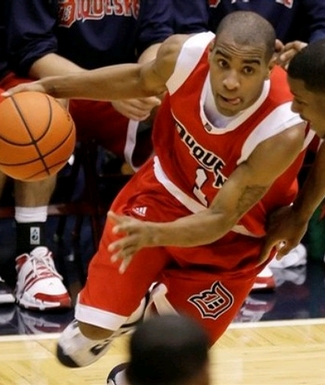
Jonathan Givony
One of the more versatile players in college basketball, Aaron Jackson is leading Duquesne to their best season in nearly 30 years, elevating his professional basketball stock considerably in the process. Jackson is amongst the Atlantic-10 leaders in a number of statistical categories, including points, rebounds, assists, steals, field goal percentage, free throw percentage and minutes played. He is likely to receive strong consideration for conference player of the year honors, along with Ahmad Nivins and Dionte Christmas.
Showing nice size at 6-4, and solid athleticism, Jackson sees quite a few minutes at the point guard position for Duquesne. He is at his best pushing the ball in transition, as his team plays at an extremely fast pace. Jackson is a tough, smart and very high energy guard, who does a great job getting to the basket and finishing around the rim, sporting one of the best two-point percentage rates (59.5%) of any point guard in the NCAA. He can create his own shot going either left or right, and does an excellent job finishing through contact, with either hand, often in acrobatic fashion.
Jackson's assist to turnover ratio and PPR are solid, as he's an unselfish player with a good feel for the game. He could still stand to improve his decision making skills, though, as it's clear that he's not a pure playmaker. He only plays the game at one speed and is an improvable ball-handler, struggling to get by defenders at times in half-court situations.
As a perimeter shooter, Jackson has improved this season, making 36% of his attempts. He only takes a little over two attempts per game, though, usually open looks with his feet set. Jackson's jumper looks very flat and is extremely inconsistent off the dribbleit's pretty obvious that he has plenty of work to do in this area. Developing a better mid-range game should be one of his priorities.
Defensively, Jackson does a good job getting in the passing lanes, but like his entire team, does not really stand out in this area. He lacks some strength and does not possess the best awareness or fundamentals on this end of the floor. He does do a great job filling the stat-sheet, though, pulling down nearly six rebounds per game. Considering the effort he shows on the court, it's likely that he can develop into a very good defender in time. The fact that he's often asked to spend 40 minutes on the court and shoulder such a huge offensive load probably doesn't help in this regard.
All in all, Jackson is an interesting prospect who is likely to get some looks in places like Portsmouth and in private workouts, as he's a point guard with excellent size and versatility. He may not be ready to play in the NBA right away, but is a player that teams should keep tabs on to see how he develops over the next few years, as he does not look to have reached his full potential just yet, and reportedly has very strong intangibles as well.
Showing nice size at 6-4, and solid athleticism, Jackson sees quite a few minutes at the point guard position for Duquesne. He is at his best pushing the ball in transition, as his team plays at an extremely fast pace. Jackson is a tough, smart and very high energy guard, who does a great job getting to the basket and finishing around the rim, sporting one of the best two-point percentage rates (59.5%) of any point guard in the NCAA. He can create his own shot going either left or right, and does an excellent job finishing through contact, with either hand, often in acrobatic fashion.
Jackson's assist to turnover ratio and PPR are solid, as he's an unselfish player with a good feel for the game. He could still stand to improve his decision making skills, though, as it's clear that he's not a pure playmaker. He only plays the game at one speed and is an improvable ball-handler, struggling to get by defenders at times in half-court situations.
As a perimeter shooter, Jackson has improved this season, making 36% of his attempts. He only takes a little over two attempts per game, though, usually open looks with his feet set. Jackson's jumper looks very flat and is extremely inconsistent off the dribbleit's pretty obvious that he has plenty of work to do in this area. Developing a better mid-range game should be one of his priorities.
Defensively, Jackson does a good job getting in the passing lanes, but like his entire team, does not really stand out in this area. He lacks some strength and does not possess the best awareness or fundamentals on this end of the floor. He does do a great job filling the stat-sheet, though, pulling down nearly six rebounds per game. Considering the effort he shows on the court, it's likely that he can develop into a very good defender in time. The fact that he's often asked to spend 40 minutes on the court and shoulder such a huge offensive load probably doesn't help in this regard.
All in all, Jackson is an interesting prospect who is likely to get some looks in places like Portsmouth and in private workouts, as he's a point guard with excellent size and versatility. He may not be ready to play in the NBA right away, but is a player that teams should keep tabs on to see how he develops over the next few years, as he does not look to have reached his full potential just yet, and reportedly has very strong intangibles as well.















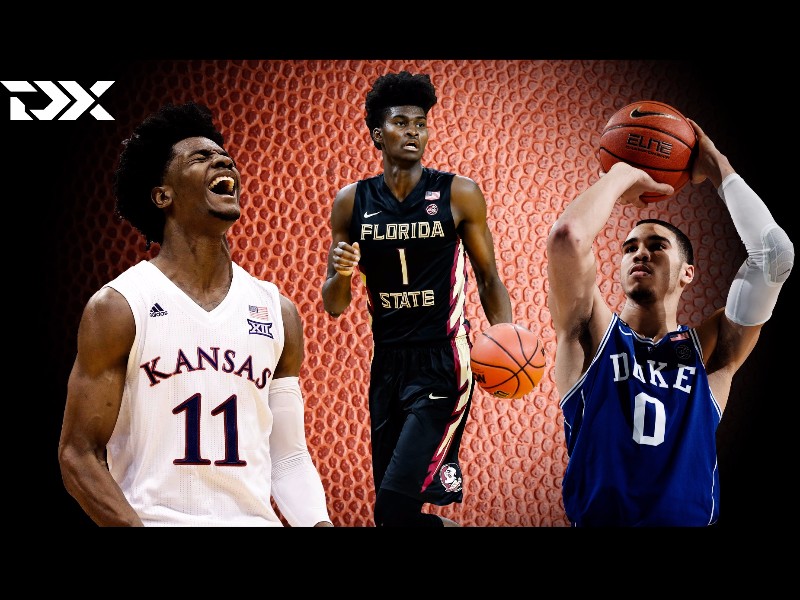
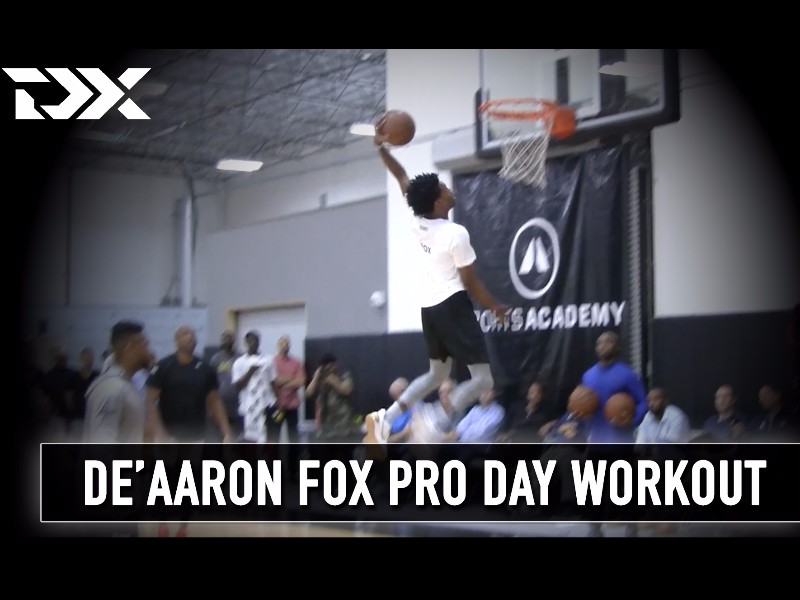


















Comments